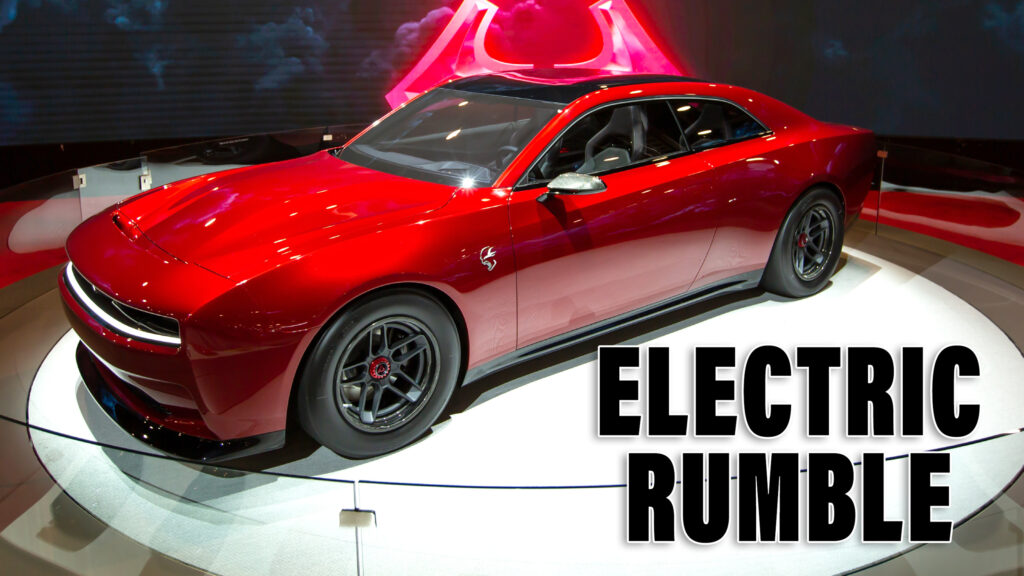Videos emerging from the recent Chicago Auto Show are showing what the latest version of Dodge’s fascinating (or gimmicky) new artificial exhaust system sounds like in person. The 126 dB “exhaust” note is strong enough to feel in one’s chest, according to people who were in attendance.
The live demonstration of the Dodge Charger Daytona SRT Concept‘s capabilities was held at the Chicago Auto Show’s concept garage, where a number of Stellantis EVs, as well as other brands’ vehicles, were present. Largely reserved for EVs, though, few were as loud as Dodge’s latest show car.
Although we’ve heard clips of the EV’s sound profile before, that was a studio-quality example, and Dodge has said it’s still toying around with the audio based on consumer feedback, to make sure it gets it right. For this presentation, the sound was played live from the car, and in a real location. Moreover, as pointed out by Fox News’ Gary Gastelu, this updated version of the electric roar has appears to have a deeper tone than before (check out the last video to compare).
Read: Is The Dodge Charger Daytona SRT’s Fake V8 Sound Cool Or Cringy?
“It’s actually very cool, and you can actually feel it in your chest,” said the host of the Cars Made Simple YouTube channel. “And, man, that actually filled this room, no problem. It was extremely loud. Much louder than I thought it would be.”
Dodge has described “exhaust” note as a visceral “Dark Matter” sound profile that emanates from a system that’s made up of an amplifier and a tuning chamber that are located at the rear of the vehicle. Dubbed the Fratzonic Chambered Exhaust, it can generate up to 126 dB of noise, which the same volume generated by an SRT Hellcat vehicle.
Part of Dodge’s efforts to deliver an EV that will appeal to its base, it isn’t the only performance manufacturer interested in delivering a direct equivalent to the exhaust note in an internal combustion engine.
Ferrari has also patented a similar system, for a “reproduction device for the realization of a sound that can be associated with an electric motor.” For that, the Italian automaker intends to amplify the noise generated by the electric motors, to make them much louder.
The tuning industry, too, has taken on this challenge. When it unveiled its electric take on the Ford GT40, Everrati offered it with a 110 dB speaker that can produce simulated engine note, to make the EV feel more like the classic racecar it’s based on.
What do you think, though? Is there a right way to tackle this issue? Is Dodge’s engine-like synthetic sound the right move? Would you like to hear a Ferrari’s motors whine? Would you prefer to hear a straight-up fake V8? Or should automakers just let EV drivers enjoy their cars quietly?
Original Studio Sounds




